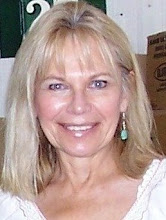I love maps. Love them, love them, love them. For me, genealogy is the perfect blend of many things I love: playing detective to solve mysteries and find the truth of a situation, organizing information so that the big picture is as understandable as the small detail, making cold calls to third cousins who have never heard of me, translating text from foreign languages into English, and spending hours poring over maps. I enjoy genealogy the most when it’s a good balance of show-and-tell, rich with old photos, vintage postcards, maps, and other illustrations that make names and dates come alive.
A photograph captures a moment in time. A postcard preserves a landscape, a building, a passenger ship that may no longer exist. A map identifies exactly where on Planet Earth a family lived hundreds of years ago, thousands of miles away across an ocean. All these images carry enormous power. To me, they’re just plain magical. When I find a family village on a map and touch that place-name on that piece of paper (or stare at it on my computer screen), I feel like I am touching all the generations of my family who lived there. (In the interest of full personal disclosure here, I should note that if I could have one wish—excluding, of course, world peace—it would be time travel.)
Over the past 13 years, I’ve collected a variety of maps that illustrate the geographic area my Prokopowicz families have called home for hundreds of years. It is the Lida region in today’s western Belarus, populated predominantly by ethnic Poles. This territory at various times in history has been part of the Polish-Lithuanian Commonwealth, part of the Russian Empire, part of the Second Polish Republic, part of the Union of Soviet Socialist Republics. Depending on the era, maps may label this region Bialorus, Wilno gubernia, wojewodztwo wilenskie, wojewodztwo nowogrodskie, Byelorussia, Belarus. Many Poles still refer to it as part of the kresy, Poland’s eastern borderlands. The most detailed maps of the Lida area—the ones that identify even the smallest villages and hamlets—were created in Polish, German, and Russian. Since this area today shares borders with Poland and Lithuania, villages along the “frontier” are sometimes included in Lithuanian maps as well.
Coming next: Some maps of the Lida area. (A current map of Belarus and a map of Partitioned Poland are among my August 17 posts.)
Tuesday, October 20, 2009
Subscribe to:
Post Comments (Atom)










No comments:
Post a Comment